Will You Die From Eating Red Meat?

A recent study of 37,698 men and 83,644 women over 2.96 million person-years of follow-up coming from the world’s top researchers at Harvard University found that eating any amount of red meat increased the risk of cardiovascular disease, cancer, and a shorter lifespan.
And it’s likely a shorter life with an unhappy ending because you may be dying from cardiovascular disease or cancer or both.
What’s a bodybuilder to do?
Many years ago, eggs were in the press but all of that's changed. Red meat is highly nutritious. Nutritionists regard it as a superior source of protein as well as vitamins and minerals, and if it’s grass-fed beef, it contains significant amounts of healthy fats, such as CLA and omega-3s.
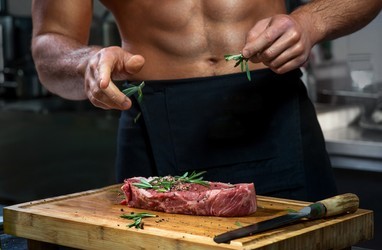
However, for processed red meats, such as hot dogs and bacon, which contain carcinogenic nitrates, the study found a 20 percent reduction in lifespan. For unprocessed red meats, it found a 13 percent reduction.
It also found an 18 percent increased risk of death from cardiovascular disease for unprocessed red meats and a 21 percent increased risk of death for processed red meats. And it found a 10 percent increased risk of death from cancers for unprocessed red meats and a 16 percent increased risk of death for processed meats.
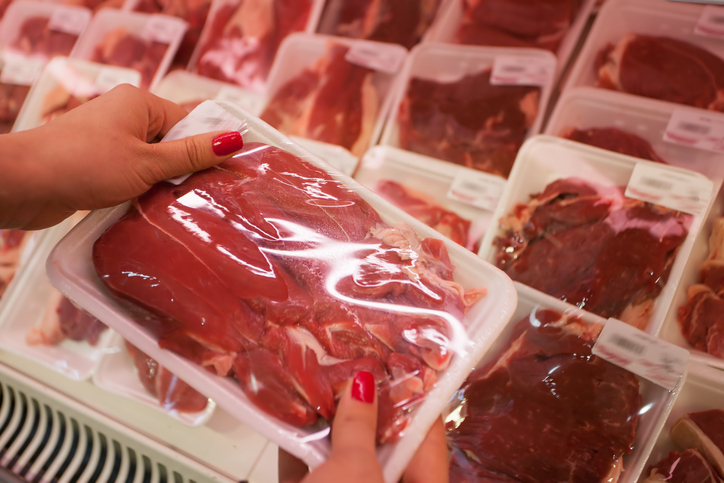
But would there be different conclusions if the red meat came from roaming red meat animals that ate what they are genetically programmed to eat—natural organic grasses, like the meat that dominates the beef industry in Australia and New Zealand?
Possibly, but that’s not what we get in the USA the great majority of the time. Approximately 95 percent of the time, unless you’re shopping at Whole Foods Market, you get death beef.
A seminal study called “Paleolithic Nutrition” in the New England Journal of Medicine said that during certain time periods in various locations around the planet over the last 100,000 years our ancestors consumed as much as 70 percent of their diets as raw red meat.
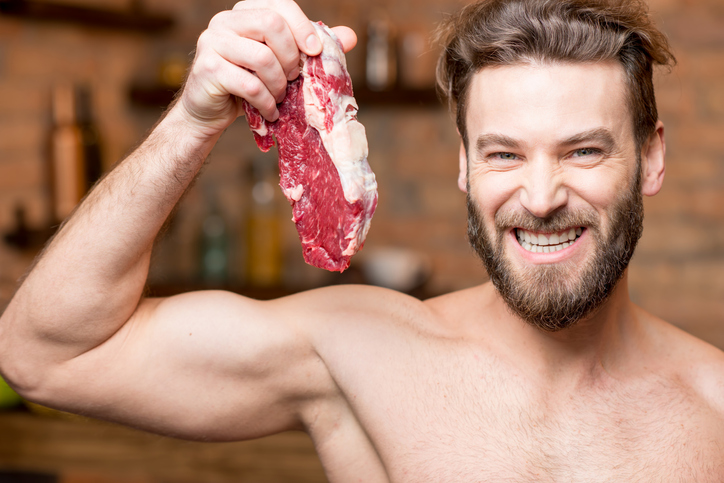
And although there have been vegetarians scattered around the planet at various times, typical early humans consumed somewhere around an average of 35 percent of their diets as red meat.
Since we evolved eating red meat as a significant part of our diets, aren’t we genetically programmed to be healthy eating it?
The answer is yes.
The reason the Harvard study arrived at the conclusion that any consumption of red meat increases the risk of cardiovascular disease, cancer, and a shorter lifespan is that approximately 95 percent of the red meat eaten in the USA, which is what the study looked at, is tremendously different and nutritionally inferior compared to meat from cattle that feed on only organic grasses and legumes.
GRASS-FED BEEF VS. CORN-FED BEEF
The standard for quickest growth for the dollar in the US beef industry is to fatten the animals before slaughter by feeding them the richest sources of carbohydrate calories available, which is mostly corn. Loaded with carb calories, the animals put on hundreds of pounds while also being semi-immobilized so they don’t burn up calories in feedlots full of shoulder-to-shoulder cattle.
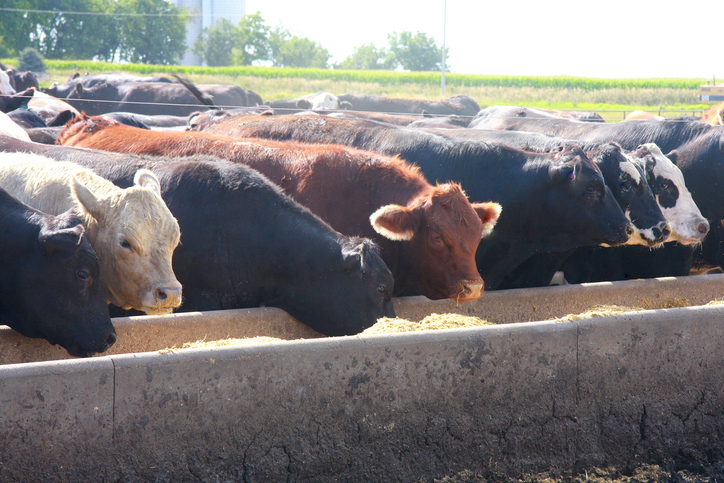
An older method that’s standard in other countries, such as Australia, New Zealand, and Argentina is to raise the animals roaming in pastures, eating organic grasses and legumes, which their metabolisms are genetically geared to eat. This single difference completely changes the amounts and the contents of the fats and nutrients their meats contain.
For instance, grain-fed beef contains about five times more saturated fat (lard) than grass-fed beef.3 Even the leaner “bodybuilding” cuts aren’t as lean.
Furthermore, and this is important, the fat of roaming red meat animals contains about 4 percent omega-3 fats,3 while corn-fed beef contains almost undetectable amounts of this important heart- and brain-healthy nutrient.
Grass-fed beef is better for human health than grain-fed beef in at least a dozen different ways.
| Compared with grain-fed beef, grass-fed beef is: |
|---|
| 49% lower in total fat;3 |
| Higher in beta-carotene, which has anti-cancer properties; |
| Three to five times higher in the anti-cancer CLA (trans 10, cis 12, CLA);4 |
| Higher in vaccenic acid (which converts to CLA);3 |
| Four times higher in vitamin E, which is good for cardiovascular health and fighting cancer; |
| About five times higher in total omega-3 fats,6 which are good for the cardiovascular system, fighting cancer, and a better mood; |
| A healthier ratio of omega-6 to omega-3 fatty acids (1.65 vs. 4.84),3 which is better for cardiovascular health, fighting cancer, and a better mood; |
| Lower in the saturated fats that are linked with heart disease;3 |
| Four times richer in anti-cancer selenium, which has also been shown to improve mood;8 |
| Lower in trans fats, which promote cardiovascular disease, cancer, anxiety, and depression;9 |
| Higher in vitamin B1 (thiamine) and B2 (riboflavin);3 |
| Higher in calcium, magnesium and vitamin K.3 |
So you can see why eating corn-fattened beef causes the opposite effect of grass-fed beef.
CANCER
As for the increase in the risk of cancer, typical grain-fed beef is riddled with antibiotics, herbicides, pesticides, and other carcinogenic chemicals that organically grass-fed, range-roaming beef doesn’t contain. As well, the balance of fats, with far less omega-3, more omega-6, more trans fats, and less anti-cancer CLA, is more likely to promote cancer.
MORE SELENIUM—A POTENT ANTI-CANCER NUTRIENT
Just as grass-eating cattle have three to five times more of the anti-cancer type of CLA, organically grass-fed range-roaming cattle have about four times more selenium than grain-fed cattle. Eating just three ounces of grass-fed beef can give you 100 micrograms of selenium.
E. COLI?!
A study in the March 28, 2000 issue of the Proceedings of the National Academy of Sciences reports that as many as one out of every three domesticated cattle may play host to the deadliest strain of E. coli bacteria (0157:H). This is ten times higher than earlier estimates. Grass-fed cattle don’t share this problem. Feeding cattle their natural diet of grasses greatly reduces the risk of disease transmission. Why? First, it keeps the overall bacteria count low. Second, it prevents the bacteria from becoming acid resistant. Acid-resistant bacteria are far more likely to survive the acidity of our normal digestive juices and cause disease.

As well, about half (47 percent) of the grain-fed beef sold in the USA is contaminated with Staphylococcus aureus (“staph”), a bacteria linked to a wide range of human diseases and one that’s also becoming resistant to antibiotics such as MERSA.
VITAMIN E
The graph below shows vitamin E levels in meat from (1) feedlot cattle, (2) feedlot cattle given high doses of synthetic vitamin E (1,000 IU per day), and (3) cattle raised on fresh pasture grass with no added supplements. The meat from the pastured cattle is four times higher in vitamin E than the meat from the feedlot cattle and, interestingly, almost twice as high as the meat from the feedlot cattle given vitamin E supplements. In humans, vitamin E is linked with a lower risk of heart disease and cancer, while also having anti-aging properties. Most Americans are vitamin E deficient.

Data from: Smith, GC. Dietary supplementation of vitamin E to cattle to improve shelf life and case life of beef for domestic and international markets. Colorado State University, Fort Collins, Colorado 80523-1171.
GRASS-FED BEEF MAKES A HAPPIER YOU
March 17 2012 saw the release of a study from Australia, where the majority of cattle are grass-fed, that showed that women who ate a few servings of beef a week were less likely to suffer from depression or anxiety disorders.
In other words, they were mentally healthier when they consumed the nutrients contained in grass-fed beef. Logically, it’s the greater amounts of omega-3 fats and selenium along with far lower levels of trans fats and omega-6 fats that caused this.
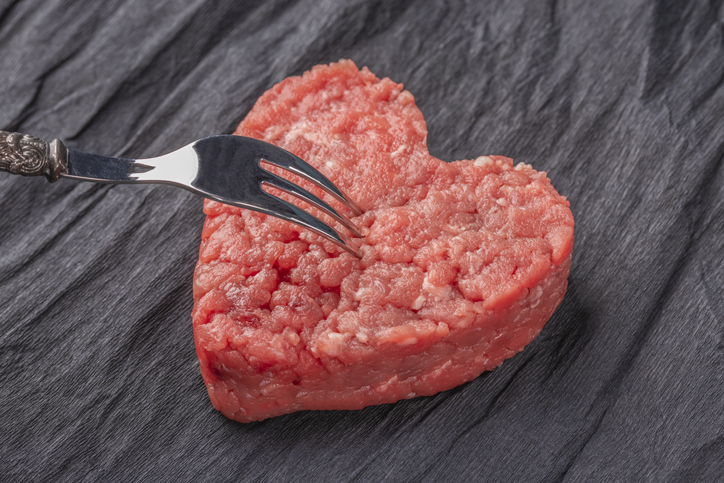
The research attributed the results to the grass diet of most Australian cattle and sheep compared with the grain-based diet of herds and flocks elsewhere (such as the USA).
“Red meat in Australia is a healthy product as it contains high levels of nutrients, including omega-3 fatty acids that are important for mental and physical health,” said the study leader, associate professor Felice Jacka.
As I said, red meat from grass-fed beef, especially from organically-raised range-roaming animals, has the opposite effect of corn-fattened beef.
THE BALANCE OF OMEGA-3 AND OMEGA-6 FATS
There are two types of fats that are essential for your health: omega-6 and omega-3 fatty acids. The typical Western diet is overloaded with omega-6 fatty acids and deficient in omega-3s, upsetting a critical balance. Look at the graph below and you’ll see that fresh pasture has two times more omega-3 than omega-6 fatty acids. Corn and soy, on the other hand, have far more omega-6s than omega-3s.
Therefore, when you switch to grass-fed products, you’re helping to correct the gross imbalance in the Western diet. Eating a balanced ratio of essential fatty acids is linked with a lower risk of cancer, heart disease, diabetes, obesity, and mental disorders. (To learn more about this essential balance, read The Omega-3 Connection by Andrew L. Stoll, MD.)
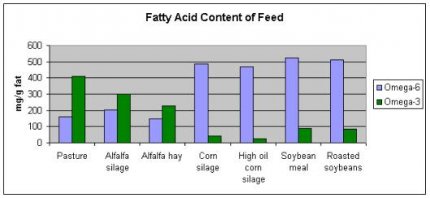
(US Dairy Forage Research Center, 1995 Research Summaries.)
GLOBAL WARMING
A big question as yet left unaddressed is the increase in global warming that the conventional corn-fed method for raising cattle is known to promote in confined animal feeding operations (CAFOs).
According to a 2006 report by the United Nations Food and Agriculture Organization (FAO), CAFOs in the US cause a more potent relative effect on global warming than automobiles. It turns out that producing half a pound of hamburger for someone’s lunch releases as much greenhouse gas into the atmosphere as driving a 3,000-pound car nearly 10 miles.
Two of the gases released by CAFOs, methane and nitrous oxide, have many times more effect on global warming than the carbon dioxide created by automobiles. For instance, the methane released from CAFOs constitutes 18 percent of US methane emissions. Methane causes 23 times as much warming effect as carbon dioxide and accounts for 1.4 percent of combined US heat-trapping emissions.
CAFOs produce another 0.8 percent of US global warming emissions in the form of nitrous oxide, which has about 296 times the warming effect of carbon dioxide.
This all adds up when we consider that a typical CAFO has thousands of methane-producing animals standing close together on feedlot dirt that reflects the greenhouse gases upwards into the atmosphere.
Pastures in grass-feeding ranches have the opposite effect that CAFOs have. The vegetation that a pasture has removes carbon dioxide from the atmosphere and sequesters it in the soil because pastures are natural carbon sinks.
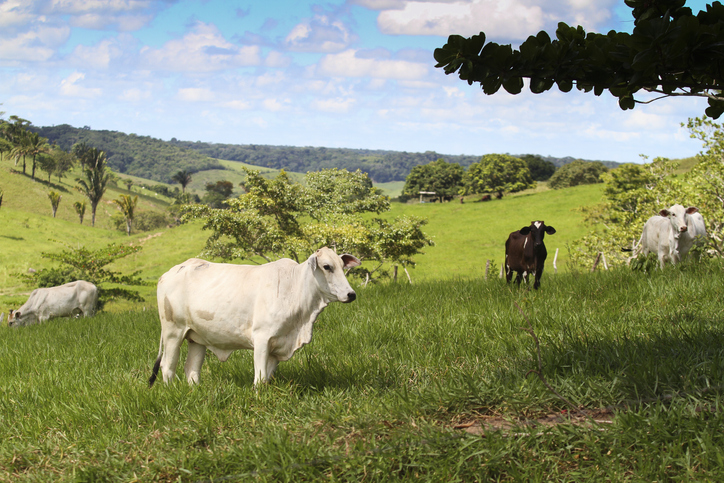
WORTHWHILE READING
For those who want to learn more, The Union of Concerned Scientists provides an overview of how grass-feeding ranches can contribute to reducing global warming in their report “Global Warming and Pasture-Raised Beef Production in the U.S.”
And in their report “Raising the Steaks, Global Warming and Pasture-Raised Beef Production in the United States,” they lay out suggestions that ranchers can use to improve the contribution that pastures can have to reduce global warming.
SUMMARY
Here’s the take-home message for red meat eaters:
Try to limit your consumption of red meat if it’s not grass-fed and seek out a source of grass-fed red meat, such as Whole Foods Market and other progressive natural food stores. Feel free to eat grass-fed beef if you’re a meat eater. It’s loaded with nutrients that improve physical strength, cardiovascular health, immune strength, and as the Australian study said, brain chemistry, including better mood and reduced anxiety.
To counter the potential health risks, if you choose to eat some corn-fed red meat, take a strong multivitamin—and I don’t mean an ordinary low-potency vitamin. I mean a high-potency SuperNutrition multivitamin. And add a few nutrients that reduce the risk of cardiovascular disease (see http://www.michaelmooney.net/ReduceCVDRisk.html) and cancer (see: http://www.michaelmooney.net/Anti-CancerNutrients.html), such as omega-3 fish oil, high dose vitamin D, CoQ10, and high-dose vitamin C.
Ask for organic grass-fed beef where you shop. Consumer requests can change the marketplace. The United States’ grass-fed beef industry has grown from $2 million in 1998 to over $380 million in 2010. It is expected to close in on 2 billion dollars this year. If you like eating red meat, you can help the marketplace change for your better health by asking for what you want.
Substituting grass-fed beef for grain-fed beef is one more thing you can do to help reduce global warming.
References:
1http://archinte.amaassn.org/cgi/content/abstract/archinternmed.2011.2287v1
2http://www.ncbi.nlm.nih.gov/pubmed/2981409
3http://jas.fass.org/content/early/2009/06/05/jas.20091850.full.pdf+html
4http://jas.fass.org/content/78/11/2849.abstract
5http://www.rollinghillsfarm.com/why-grass-fed/meat-grassfed-cattle-four-times-higher-vitamin-e
6http://www.ncbi.nlm.nih.gov/pubmed/20807460
7http://digitalcommons.unl.edu/greatplainsresearch/544/
8http://www.ncbi.nlm.nih.gov/pubmed/2096413
9http://www.plosone.org/article/info%3Adoi%2F10.1371%2Fjournal.pone.0016268
10http://www.tgen.org/news/index.cfm?newsid=1948
11http://www.ncbi.nlm.nih.gov/pubmed?term=22433903

